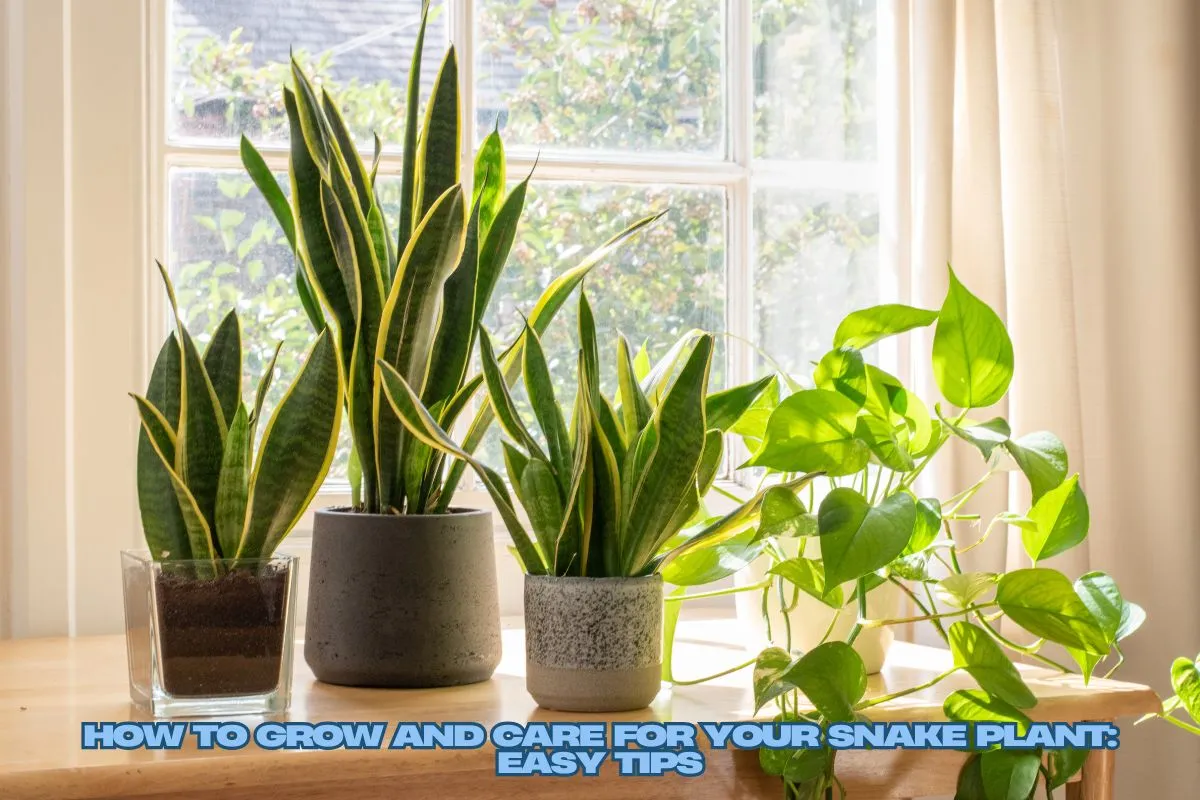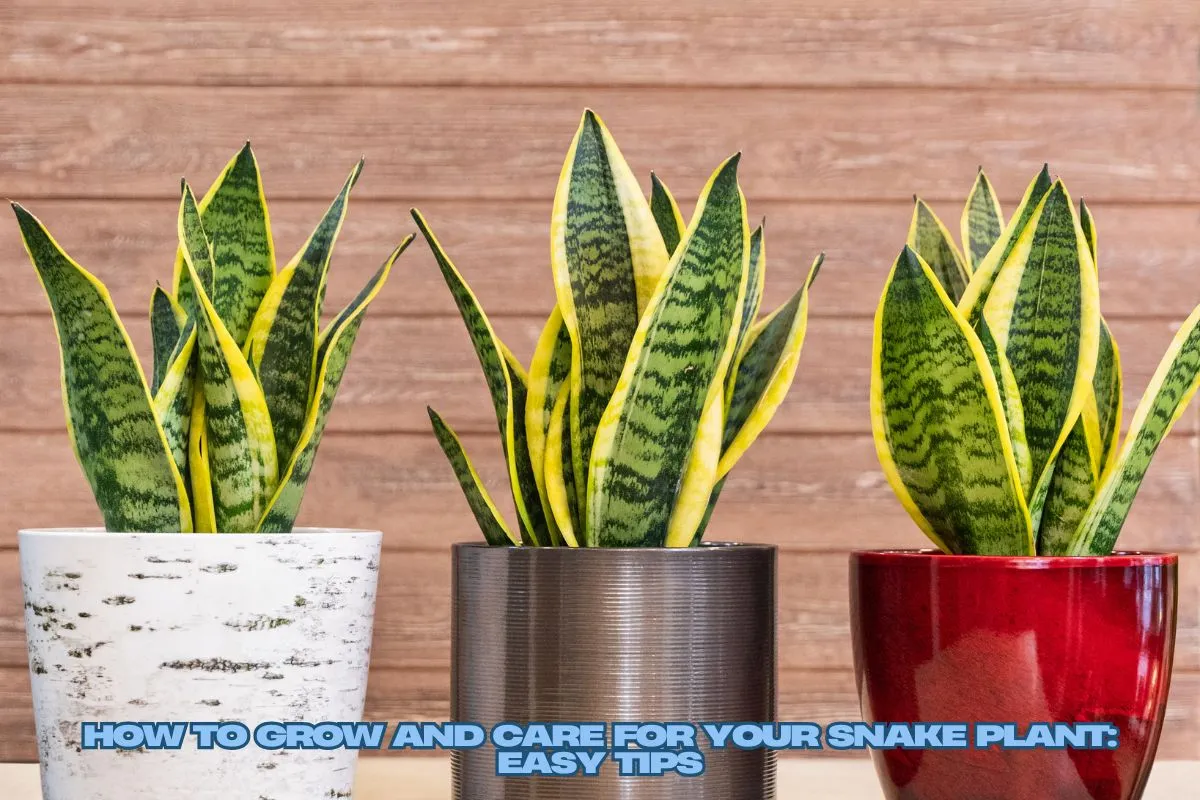Snake plants, also known as Sansevieria or Mother-in-law’s Tongue, are among the most popular houseplants for beginners and seasoned gardeners. Their striking appearance, ease of care, and impressive air-purifying abilities make them a standout choice for any home or office. Whether you’re looking to add a touch of greenery to your space or you’ve been gifted a snake plant, understanding how to care for it properly is key to ensuring it thrives.
In this guide, we’ll walk you through everything you need about growing and caring for a snake plant, from choosing the right spot in your home to ensuring proper watering and maintenance. With these tips and tricks, your snake plant will be happy and healthy for years!
1. Why Snake Plants Are the Perfect Indoor Plant
Before diving into care instructions, let’s take a moment to understand why snake plants are such beloved houseplants. One of their biggest advantages is how adaptable they are to different environments. Snake plants can survive in various conditions, from low light to bright, indirect sunlight. They’re also tolerant of a wide range of temperatures, making them a great choice for people with busy lifestyles or beginners.
Another incredible benefit is that snake plants are excellent air purifiers. According to NASA’s Clean Air Study, snake plants are among the best for improving indoor air quality, helping filter out toxins like formaldehyde and benzene (NASA Clean Air Study). With their air-purifying capabilities, snake plants are perfect for living rooms, bedrooms, or offices where clean air is essential.
In addition, snake plants require very little attention, making them ideal for those who might not have the greenest thumb. As a bonus, their tall, upright leaves can grow as high as 4 feet, creating a bold, statement-making look in any room.

2. Choosing the Right Spot for Your Snake Plant
Light requirements are one of the most important things to remember when caring for a snake plant. While they are known for their ability to thrive in low light, snake plants will grow best in bright, indirect light. Direct sunlight, primarily through windows, can cause the leaves to burn and turn yellow. However, snake plants are versatile and can tolerate areas with limited light, such as corners of rooms or offices with no windows.
When placing your snake plant, find a spot that receives a good amount of natural light throughout the day. Ideally, place it near a window with sheer curtains or a spot that gets bright, indirect sunlight. But remember, while snake plants can tolerate low light, their growth may be slower, and their leaves might not be as vibrant.
As an anecdote from my own experience, I once placed a snake plant in a low-light corner of my living room, thinking it wouldn’t do well. Surprisingly, it thrived, although it didn’t grow as quickly as the ones I had by brighter windows. It’s incredible how adaptable these plants are!
3. Watering Your Snake Plant: Less Is More
One of the most essential rules for growing snake plants is to avoid overwatering. Snake plants thrive on neglect (as many plant experts will tell you), and overwatering is the most significant mistake people make. Snake plants are drought-tolerant and prefer the soil to dry out completely between waterings.
A general rule of thumb is to water your snake plant about once every two weeks or when the soil is dry to the touch. You can water it once a month during the colder months as the plant’s growth slows down. Overwatering can cause root rot, the most common problem with snake plants. It’s best to err on the side of under-watering, as they can tolerate a bit of drought but struggle with soggy soil.
When you water your snake plant, make sure to do so thoroughly so the water reaches the roots. Drainage is also crucial—ensure that your pot has holes to allow any excess water to escape.
As one plant expert once said, “Allow the soil to dry out completely between waterings. This is crucial to prevent root rot” (Source: Reputable gardening books).
4. Choosing the Right Soil and Pot
The right soil is essential for keeping your snake plant healthy. Use a well-draining potting mix, such as a cactus or succulent mix, to help prevent waterlogging. Snake plants do not like sitting in water, so ensure the pot has drainage holes at the bottom to let excess water escape.
When choosing a pot, it is essential to pick one slightly larger than the plant’s root system. This will give it room to grow, but make sure the pot isn’t too big. A pot that’s too large can lead to water retention, which can cause root rot.
| Care Factor | Recommended | Notes |
|---|---|---|
| Light | Bright, indirect light | Can tolerate low light but growth will be slower. |
| Watering | Once every 2 weeks (or when soil is dry) | Avoid overwatering; allow the soil to dry out completely between waterings. |
| Soil | Well-draining potting mix (cactus mix) | Prevent waterlogging to avoid root rot. |
| Temperature | 60°F – 85°F (16°C – 29°C) | Avoid freezing temperatures. |
| Fertilizing | Once every 1-2 months (during growing season) | Use a diluted, balanced fertilizer in spring and summer. |
| Repotting | Every 2-3 years | Repot only when the plant becomes root-bound. |
| Humidity | Moderate to low | Snake plants tolerate dry air well, no need for high humidity. |
| Common Problems | Overwatering, root rot, yellowing leaves | Ensure good drainage and proper watering. |
5. Fertilizing Snake Plants: Keep It Simple
Snake plants are not heavy feeders and don’t require frequent fertilization. However, if you want to encourage faster growth during the growing season (spring and summer), you can use a balanced liquid fertilizer diluted to half-strength. Fertilize your snake plant once every month or two during the growing season, but don’t overdo it. Too much fertilizer can cause damage to the roots.
In my experience, fertilizing snake plants lightly once or twice a year is often enough to keep them thriving. If you’re unsure whether to fertilize, skipping a feeding is better than overfeeding. Snake plants are tough and can thrive with minimal attention.
6. Repotting Your Snake Plant
Snake plants don’t need frequent repotting. They grow slowly and can live in the same pot for several years before needing a larger space. Typically, you should report your snake plant when it becomes root-bound, meaning its roots have outgrown the pot and its growth has slowed.
As a rule, report your snake plant every 2-3 years. When you do repot, choose a pot just one size larger than the current one, and be sure to use fresh potting mix to give the plant a healthy new environment.
7. Pruning and Maintenance
Snake plants are generally low-maintenance, but they do require occasional pruning. You can trim any leaves at the base using clean scissors or pruning shears if any leaves become damaged, yellow, or brown. This will help keep the plant looking tidy and encourage new growth.
You can also remove any pups (small offshoots of the plant) that appear at the base of the snake plant. If you want to propagate your snake plant, you can separate and plant these pups in their pots.
8. Troubleshooting: Common Problems with Snake Plants
While snake plants are generally hardy, they can face a few challenges. Here are some common problems you might encounter and how to address them:
- Yellowing Leaves: This is often a sign of overwatering or insufficient light. Check the soil moisture and move the plant to a brighter spot.
- Brown Tips: Brown tips can be caused by underwatering, low humidity, or excessive direct sunlight. Trim the brown tips and adjust the watering schedule.
- Root Rot: If the leaves are wilting or mushy, root rot might be the cause. Remove the plant from the pot, trim rotting roots, and repot in fresh soil with proper drainage.
Conclusion: Your Snake Plant Is Ready to Thrive
By following these simple tips, you can grow and care for your snake plant successfully. Remember that less is more when watering, and ensure your plant has proper lighting and well-draining soil. With minimal effort, you can enjoy the beauty and air-purifying benefits of this resilient and adaptable houseplant.
Incorporating a snake plant into your home or office brings a touch of greenery but also helps improve your indoor air quality. Plus, as someone who’s had many snake plants over the years, I can say from experience that they’re nearly impossible to kill! So, give it a try—your snake plant will thank you.










